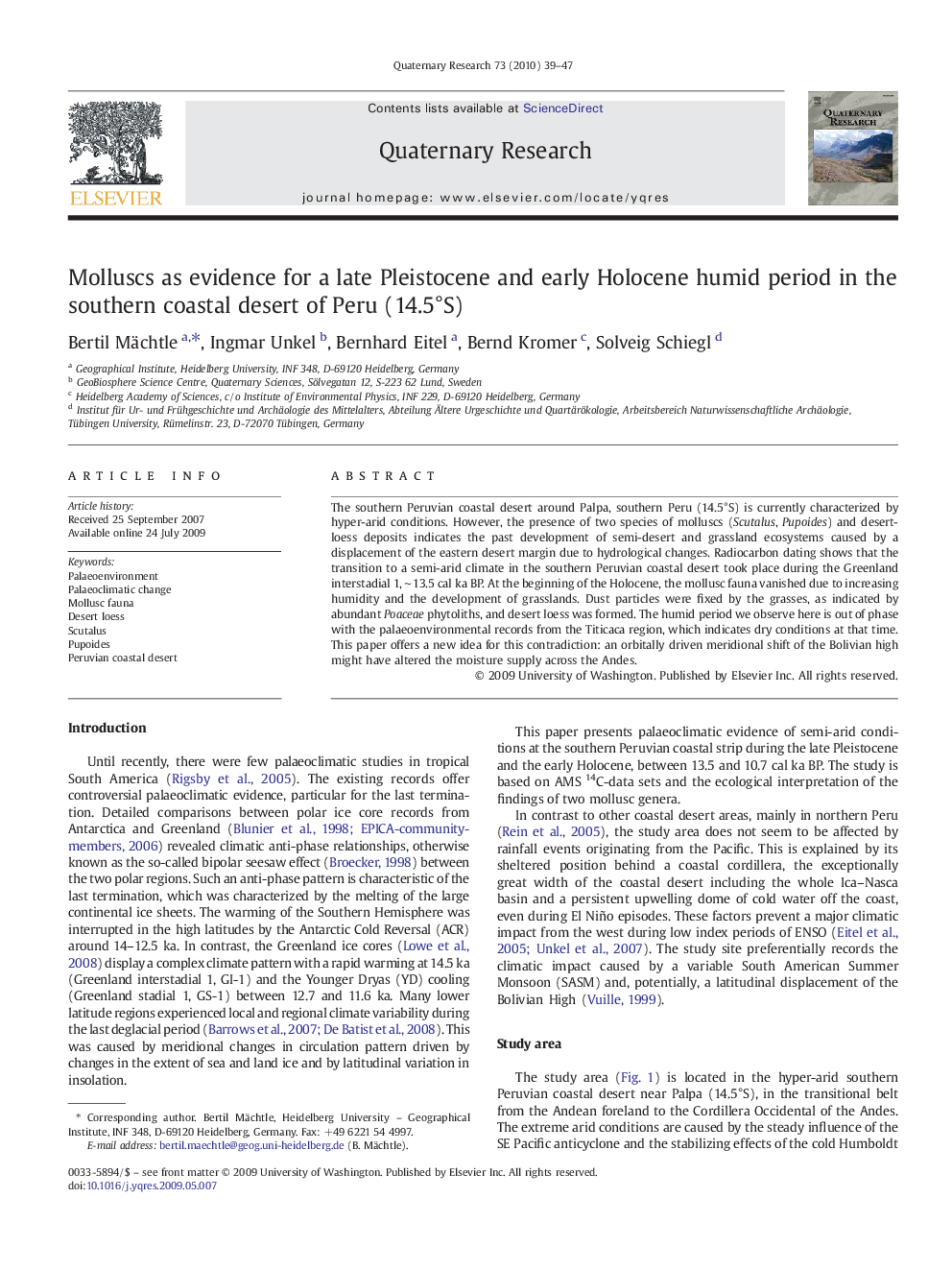| کد مقاله | کد نشریه | سال انتشار | مقاله انگلیسی | نسخه تمام متن |
|---|---|---|---|---|
| 1045794 | 944835 | 2010 | 9 صفحه PDF | دانلود رایگان |

The southern Peruvian coastal desert around Palpa, southern Peru (14.5°S) is currently characterized by hyper-arid conditions. However, the presence of two species of molluscs (Scutalus, Pupoides) and desert-loess deposits indicates the past development of semi-desert and grassland ecosystems caused by a displacement of the eastern desert margin due to hydrological changes. Radiocarbon dating shows that the transition to a semi-arid climate in the southern Peruvian coastal desert took place during the Greenland interstadial 1, ∼ 13.5 cal ka BP. At the beginning of the Holocene, the mollusc fauna vanished due to increasing humidity and the development of grasslands. Dust particles were fixed by the grasses, as indicated by abundant Poaceae phytoliths, and desert loess was formed. The humid period we observe here is out of phase with the palaeoenvironmental records from the Titicaca region, which indicates dry conditions at that time. This paper offers a new idea for this contradiction: an orbitally driven meridional shift of the Bolivian high might have altered the moisture supply across the Andes.
Journal: Quaternary Research - Volume 73, Issue 1, January 2010, Pages 39–47